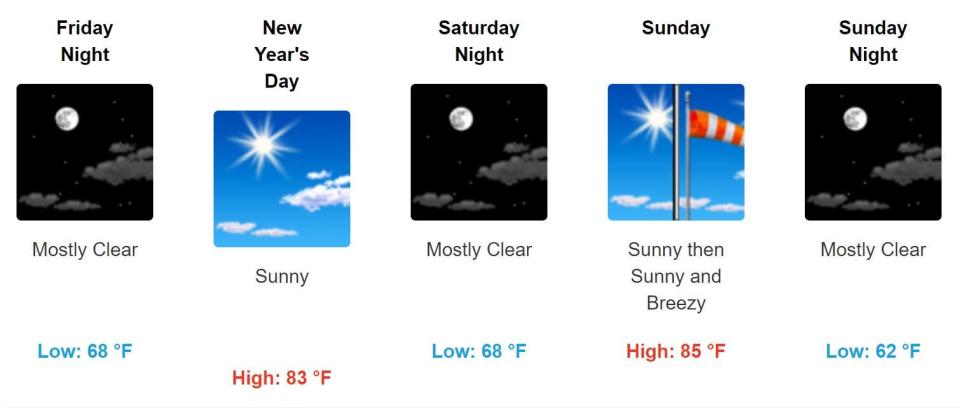New moon, cold front make way for Quadrantid meteor shower this New Year's weekend
Support local journalism by getting a digital subscription to The Palm Beach Post. For a limited time, new subscribers can get full digital access for six months for only $1. Sign up here.
A fortunate celestial alignment will enhance the first meteor shower of 2022 as the habitually flamboyant moon goes dark Sunday making way for the Quadrantids.
Ahead of the cosmic light show, which will be best viewed late Sunday into early Monday, torrid temperatures in the mid-80s could reach near record warmth with mostly sunny skies Friday through the weekend.
A cool front pushing through South Florida overnight Sunday is expected to bring minimal rain chances and sparse clouds, giving the Quadrantid meteor shower room to shine, said National Weather Service meteorologist George Rizzuto.
“We are forecasting another beautiful holiday weekend,” said the Miami-based Rizzuto. “The majority of the cloud cover with the front will move in Monday morning, but even that overcast period should be brief as this front will be relatively weak weather-wise.”

First meteor shower of 2022 could be a stunner. Watch for celestial fireworks this New Year
Early 2022 hurricane forecast: La Niña, the AMO and 'bazillion' caveats are all in play
The record high temperature for Jan. 2 is 86 degrees set in 2014, which is about where the forecast lands for Sunday. The coolest temperature in the forecast will be early Monday when the mercury could dip into the upper 50s. Monday’s high temperature will hover in the low 70s.
“We’ll get a slight break in the moisture with the front, but it will be relatively brief with the winds turning easterly again Monday into Tuesday,” Rizzuto said.
Normal high temperatures in West Palm Beach for early January are 75 degrees with overnight lows averaging 57 degrees.
The Quadrantid meteor shower, which is active from late December through early January, is the last robust sky show until April’s Lyrids. This year, the moon turns new on Sunday, leaving a dark canvas for meteor viewing.
NASA calls the Quadrantids one of the best annual meteor showers with as many as 120 meteors flying each hour in a dark sky. While the shower is known for bright fireballs, the viewing window is limited by Earth's perpendicular pass through the thin stream of debris that creates the shower.

“Unlike the Perseids or Geminids, where a good show is guaranteed so long as the moon doesn't interfere, the annual Quadrantid meteor shower is more selective,” said Sky and Telescope columnist Bob King. “Its peak is narrow — about 6 hours long — and the shower is only visible in the Northern Hemisphere in the small hours before dawn.”
The shower is named after an obsolete constellation “Quadrans Muralis.”
Quadrantids are believed to originate from asteroid 2003 EH1, which is unusual because most meteor showers come from comets. Asteroids are made of metals and rocky material that don't shed as much as comets, which consist of ice, dust, rock and organic compounds, according to the website Universe Today.
When comets near the sun, some of the ice melts and they lose bits and pieces of themselves. Asteroids typically remain solid when near the sun.
NASA's website says 2003 EH1, which measures just two miles across, could be a dead comet or "a new kind of object being discussed by astronomers called a 'rock comet.'"
Kimberly Miller is a veteran journalist for The Palm Beach Post, part of the USA Today Network of Florida. She covers weather, climate and the environment and has a certificate in Weather Forecasting from Penn State. Contact Kim at kmiller@pbpost.com.
Support local journalism by getting a digital subscription to The Palm Beach Post. For a limited time, new subscribers can get full digital access for six months for only $1. Sign up here.
This article originally appeared on Palm Beach Post: Florida weather brings promising views for first meteor shower of 2022

